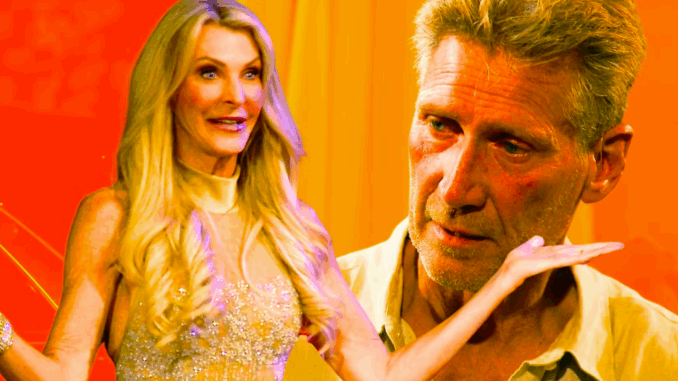
A Cultural Shift in Prime Time Television
When The Golden Bachelor premiered in September 2023, few could have predicted just how quickly it would become a cultural phenomenon. Built on a familiar formula—a group of women competing for one man’s heart—the series didn’t seem radically different from its predecessors. But this time, the cast wasn’t made up of 20- and 30-somethings looking for Instagram fame. Instead, it spotlighted women in their 60s and 70s who had lived, lost, and loved.
For millions of viewers, this wasn’t just a twist. It was a long-overdue celebration of a generation often made invisible by mainstream media. And as the season unfolded, something remarkable happened: older women across America began to see themselves not as afterthoughts, but as protagonists again.
The Visibility Gap—and How Golden Bachelor Filled It
For decades, women over 50 have been underrepresented in pop culture. According to a 2022 study from the Geena Davis Institute on Gender in Media, women over 50 made up less than 8% of speaking roles in film and television. When they did appear, they were often relegated to playing grandmothers, villains, or comic relief—not romantic leads.
The Golden Bachelor flipped that narrative. Contestants like Leslie Fhima, a vibrant 64-year-old dancer and personal trainer, or Faith Martin, a 60-year-old radio host with a guitar and a cowboy heart, were presented as full, complex people. They had stories, dreams, passions—and yes, a desire for romantic companionship.
Instead of treating aging as a decline, the show positioned it as a source of depth. It reminded viewers—young and old—that love doesn’t expire with age.
A Fan Base That Felt Seen—Finally
On social media, the response was immediate. Posts from women in their 50s, 60s, and 70s flooded TikTok, Instagram, and Facebook. Many shared how they felt inspired to reenter the dating world or take better care of their health. Some even reported feeling more confident in their bodies and identities after watching the show.
“I haven’t seen a woman who looked like me on TV in years,” wrote one viewer on Reddit. “Now I’m binge-watching with my daughter, and she’s seeing that her mom is still worth rooting for.”
Therapists and relationship coaches also began to weigh in. According to psychologist Dr. Susan Alpert, “Visibility in media reinforces self-worth. When older women are only shown as frail or out-of-touch, that narrative seeps into how we see ourselves. But when they are dynamic, sensual, and emotionally rich, it opens the door to possibility.”
The Power of Female Friendships on Screen
While the romantic arc was the show’s selling point, many viewers were more captivated by something else: the friendships between the women. Unlike earlier Bachelor seasons that thrived on cattiness, The Golden Bachelor emphasized camaraderie. Susan Noles, a fan favorite known for her wit and warmth, helped mediate tension in the house. Kathy Swarts and April Kirkwood showed vulnerability and humor in equal measure.
There were no “mean girls.” Instead, the women supported one another, often prioritizing emotional honesty over competition. That representation—of mature female friendships rooted in respect—was something audiences didn’t know they needed until they saw it.
Not Without Its Flaws
To be clear, The Golden Bachelor wasn’t perfect. As the season progressed, the show’s editing drew criticism for favoring Gerry’s narrative at the expense of the women’s deeper stories. Many fans noted that Faith Martin’s emotional exit felt abrupt and poorly explained. Others questioned whether the show handled grief, trauma, and romantic decision-making with enough nuance.
Moreover, the now infamous short-lived marriage between Gerry Turner and Theresa Nist cast a shadow over the season’s conclusion. It raised questions about whether the format—quick engagement, media frenzy, instant marriage—was truly suited for people in their 70s navigating complicated personal lives.
Still, even amid the fallout, most viewers agreed: the show had done something meaningful. It had opened a door that can’t—and shouldn’t—be closed.
A Broader Trend in Entertainment?

In the months following The Golden Bachelor, networks began exploring similar concepts. ABC greenlit The Golden Bachelorette starring Joan Vassos, a 61-year-old widow and mother of four. Meanwhile, streaming platforms reported spikes in viewership for shows like Grace and Frankie, Call the Midwife, and Our Great National Parks—all featuring older women in lead roles.
Advertisers also took note. Brands like Dove, L’Oréal, and Eileen Fisher increased their investment in campaigns centered around women over 50. In a media landscape obsessed with youth, The Golden Bachelor had proven that older demographics were not only watching, but engaging deeply—and spending.
What Comes Next: From Representation to Revolution
The true test of The Golden Bachelor’s impact will be whether it sparks long-term change. Representation is a start, but inclusion must follow. That means hiring older writers in writers’ rooms, developing age-inclusive storylines, and casting women over 50 in roles that extend beyond their relationship status.
There’s also an opportunity to tell more varied stories. While many Golden Bachelor contestants were white, straight, and conventionally attractive, future iterations could include more racial, socioeconomic, and sexual diversity. After all, the experience of aging is universal—but it is not monolithic.
Conclusion: A Moment That Mattered
For too long, older women have been pushed to the sidelines of our cultural imagination. With The Golden Bachelor, they stepped back into the spotlight—not as caricatures or cautionary tales, but as whole people worthy of love, laughter, and television time.
It may have started as a dating show. But for millions of women watching at home, it became something much bigger: a mirror, a spark, and a long-overdue invitation to take up space again.
